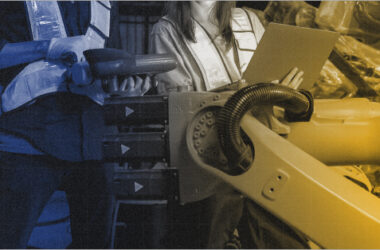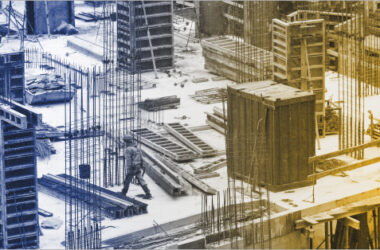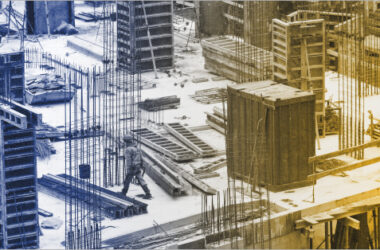Unexpected risks can pose significant financial challenges when managing large-scale engineering or construction projects in India. Erection All Risks (EAR) Insurance is an essential safety net that provides comprehensive protection against such uncertainties. This guide covers everything you need to know about EAR Insurance, its benefits, coverage, exclusions, and the factors that can influence the cost of such a policy.
Erection All Risks (EAR) Insurance: Important Features
EAR Insurance is a specialised insurance product designed to cover risks associated with the erection, installation, and testing of machinery, equipment, and structures. An EAR Policy safeguards businesses from financial losses arising from unforeseen events, ensuring smooth project completion without undue financial stress. This insurance is particularly relevant for contractors, project owners, and equipment suppliers involved in engineering or construction projects, such as power plants, industrial facilities, and heavy machinery installations.
Key Features of Erection All Risks (EAR) Insurance
Understanding the key features of an EAR Policy can help you assess its importance for your business. Here are some highlights:
1. Comprehensive Coverage
EAR Insurance covers a wide range of risks, including:
- Accidental damage to machinery or equipment during installation.
- Fire, explosion, or natural calamities like floods and earthquakes.
- Human errors during the erection process.
- Damage due to electrical or mechanical failures during testing.
- Damage during transit and storage under certain conditions.
2. Third-Party Liability
The policy also includes coverage for legal liabilities arising from third-party property damage or bodily injury caused during project execution.
3. Optional Add-Ons
Depending on your specific needs, you can enhance your EAR Insurance Policy with optional extensions, such as:
- Maintenance Period Cover: Provides protection during the maintenance phase after project completion.
- Debris Removal: Covers the cost of clearing debris after an insured event.
- Surrounding Property Cover: Protects against damage to nearby property not directly involved in the erection work.
- Additional Testing Cover: Extends coverage for additional testing beyond the standard policy terms.
Benefits of Erection All Risks (EAR) Insurance
EAR Insurance offers several advantages, making it indispensable for businesses in the construction and engineering sectors:
1. Financial Security
Unforeseen events like equipment failure or natural disasters can lead to significant financial losses. EAR Insurance helps mitigate these risks, ensuring your project stays on track.
2. Peace of Mind
With comprehensive coverage in place, project stakeholders can focus on execution without worrying about potential setbacks.
3. Tailored Policies
Many insurers offer customisable policies, allowing you to include or exclude coverage based on your project’s unique requirements.
4. Protection for All Stakeholders
From contractors to equipment suppliers, EAR insurance ensures that everyone involved in the project is safeguarded from financial risks.
Who Needs Erection All Risks (EAR) Insurance in India?
An EAR policy is essential for:
- Contractors: To protect against accidental damage during construction or erection activities.
- Project Owners: To safeguard investments and ensure timely completion.
- Subcontractors: To manage risks associated with specific tasks in a larger project.
- Equipment Suppliers: To protect machinery during transportation and installation.
Erection All Risks (EAR) Insurance Coverage and Exclusions
A. Coverage Highlights
EAR policies typically include:
- Damage to equipment or structures during installation.
- Losses due to natural disasters or accidents.
- Costs associated with third-party claims.
B. Common Exclusions in Erection All Risks (EAR) Insurance
It’s equally important to understand what’s not covered under EAR Insurance:
- Normal wear and tear.
- Defects in design or materials.
- War, terrorism, or nuclear risks.
- Losses due to intentional negligence.
- Improper storage or handling of materials.
Factors to Consider When Choosing an EAR Policy for Your Business
To select the right EAR Policy, consider the following:
1. Assess Your Risks
Analyse the potential risks specific to your project. This will help you choose an insurance policy that provides adequate coverage without unnecessary add-ons.
2. Compare Providers
Research multiple insurance companies to compare their EAR Policy offerings. Look for insurers with experience in engineering and construction projects.
3. Evaluate Policy Terms
Pay attention to coverage limits, exclusions, and optional extensions. Ensure that the policy aligns with your project’s needs.
4. Premium Costs
Understand how premiums are calculated and ensure they fit within your project budget. Premiums are typically influenced by:
- Nature of the Project: Complexity and size.
- Scope of Coverage: Limits and additional extensions.
- Duration of the Project: Longer timelines lead to higher premiums.
- Location of the Project: High-risk areas attract higher premiums.
- Type of Equipment and Materials: Expensive or sensitive equipment may require higher coverage.
- Contractor and Subcontractor Expertise: Experience can impact premium rates.
- Claims History: Previous claims can increase premiums.
- Testing and Commissioning Phase: Higher risk levels increase the cost.
- Deductibles: Higher deductibles reduce the premium.
- Market Conditions: Economic factors can impact insurance pricing.
How to File an EAR Insurance Claim?
In the event of a loss, follow these steps to file a claim under your EAR Policy:
- Notify the Insurer: Inform your provider about the incident as soon as possible.
- Document the Damage: Gather evidence such as photographs, videos, and incident reports.
- Submit Required Documents: Provide all necessary documentation, including policy details and claim forms.
- Assessment by the Insurer: The insurer will evaluate the claim and may appoint a surveyor for further inspection.
- Claim Settlement: Once approved, the insurer will process the claim and reimburse covered losses.
The Bottom Line
Erection All Risks (EAR) Insurance is a crucial investment for businesses involved in engineering and construction projects in India. It offers comprehensive coverage against potential risks, ensuring financial security and project continuity. By understanding the key features, benefits, and exclusions of EAR Insurance, you can make an informed decision that aligns with your business needs.
When selecting a policy, compare offerings from multiple insurers, evaluate the terms carefully, and prioritise a provider with a proven track record in claims settlement. With the right EAR Insurance Policy in place, you can focus entirely on your project’s success, knowing that your business is protected.








